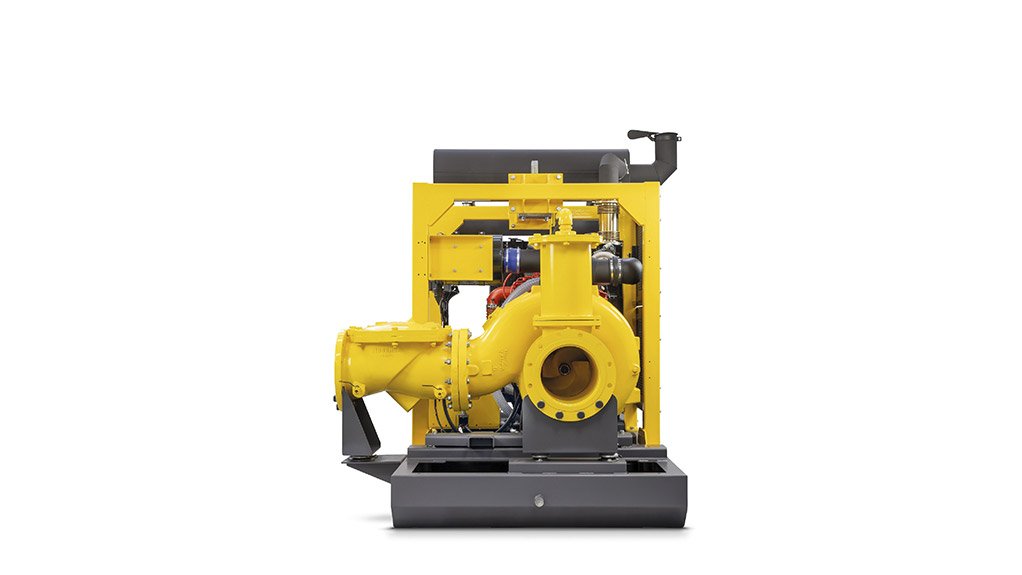
When specifying a centrifugal pump for a dewatering project, a key concept to understand is the head
Some advice when choosing the most suitable dewatering pump is not to confuse the concepts of head and pressure, according to Steve du Toit, rental development manager at pump and dredging dewatering specialist IPR.
With over 16 years in the pump dewatering business, IPR has both the range of pumps to choose from and the expertise to guide customers to the right choice, says du Toit. IPR was recently appointed by leading pump brand Atlas Copco as a master distributor for the Southern African region for its extensive range of dewatering pumps.
“In layman’s terms, the pump head is the height to which a pump can raise fluid – measured in metres or feet,” he explains. “The head is important when specifying centrifugal pumps because their pumping characteristics tend to be independent of the fluid’s specific gravity, which can also be referred to as relative density.”
He highlights that head can sometimes be confused with pressure, as there is a close relationship between the two parameters. However, there is one fundamental difference: head is independent of the fluid characteristics.
“In other words, regardless of the fluid’s relative density, the pump will lift it to the same height,” he says. “It does not matter, therefore, whether the fluid is just water or a heavy sludge.”
On the other hand, pressure is indeed dependent on the fluid being pumped, and is affected by gravity. As a result, the same head will generate a different pressure – depending on the fluid’s relative density.
“Suction conditions are also relevant to the pump head,” continues du Toit. “So if the suction level is lower, the head measured will be less.”
What the motor of the pump essentially does is convert electrical energy into mechanical energy; this energy is then imparted into the fluid as pressure. When the suction level is raised or reduced, the potential pressure of the liquid is adjusted accordingly. The more pressure a pump can deliver, the higher the head will be.
“Of course, pump manufacturers cannot know your suction level parameters, so they calculate the pump’s total head,” he says. “This is done by subtracting the total suction head – measured as height above sea level – from the total discharge head.”
He notes that the next important question is about the amount of friction that needs to be considered. There are substantial losses in the pumping circuit due to friction, depending on the length and diameter of the pipe itself, as well as the bends and gate valves through which the fluid flows.
“The sum of the head and friction loss will result in the total head, which is a more reliable indicator of pump performance than pressure,” says du Toit. “The total head indicates what the pump can do regardless of the suction conditions; when combined with your flow requirement, the total head will allow you to choose the right pump.”
Finally, the performance of a pump at a certain speed – or revolutions per minute (RPM) – can be found in the manufacturer’s datasheet. There, it will be displayed as the flow rate (Q) versus head curve. The flow will have zero or little flow at its maximum head, which is also sometimes called the shut-off head. Pump users need to ensure that the pump they choose has enough flow at the head they require.
“Remember that this selection procedure only applies to centrifugal pumps,” he says. “Piston pumps can provide more pressure, and they are selected based on flow only.”
In conclusion, du Toit notes the difference in flow units used between North America, where US gallons per minute are used, and those countries with the metric system. The latter use litres per minute, cubic metres per hour and litres per second.
“When making your selection, be sure that the units that being referred to by OEMs and service providers align with the units that you are using for your calculations and planning,” he says.